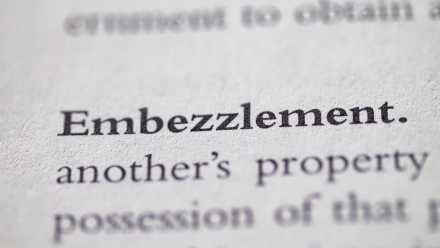Unlike any other employee, a minister creates special issues for the payroll functions of a church. These issues aren’t intuitive in nature, so it’s not uncommon for errors to occur in the payroll reporting of a minister’s compensation package. One of the most confusing aspects of a minister’s compensation package is how he or she will be classified when paying into the Social Security and Medicare system.
There are two methods of paying into the Social Security and Medicare system.
1. Federal Insurance Contributions Act (FICA)
Employees traditionally pay in through the Federal Insurance Contributions Act. The employee pays into FICA via taxes withheld from their paychecks by their employers. The employer then matches the employee’s amount and pays it directly into the system on the employee’s behalf.
2. Self Employed Contributions Act (SECA)
The other system is the Self Employed Contributions Act, which assesses the tax to the self-employed individual on a Schedule SE filed with an individual’s Federal Form 1040.
Participation in each of these systems is defined in the Internal Revenue Code (IRC).
The Internal Revenue Code
IRC Section 3121 determines who is covered by FICA.
Section 3121(b)(8) states that employment for this tax doesn’t include services performed by an ordained, commissioned, or licensed minister in the exercise of his ministry.
Section 1402 governs who is covered by SECA. IRC Section 1402(c) states that a “trade or business” for purposes of SECA will include the performance of services by a duly ordained, commissioned, or licensed minister in the exercise of his ministry (if no exemption as provided by IRC Sec. 1402(e) is in effect). This explanation demonstrates that, by law, the compensation paid to a minister (for the performance of ministerial duties) is a trade or business subject to self-employment tax. It can’t be considered as wages for FICA withholding and matching. This self-employment status is mandatory, and for people who employ ministers, it’s a key concept to understand. If a minster is paid for ministerial duties, the church may never withhold FICA/Medicare taxes from the minister and pay the matching portion.
As referenced above, under IRC Sec. 1402(e), a minister may obtain an exemption from paying the self-employment tax. The minister accomplishes this by filing Form 4361. The Form 4361 is the personal responsibility of a minister and does not involve any action on the part of either the employing church or the church that issues his or her credentials. If a minister has an approved Form 4361, he or she is not required to pay self-employment tax on ministerial earnings through his or her personal tax return.
This unique treatment of ministers for purposes of paying into the Social Security system often creates two areas of confusion for churches. Let’s break down those myths:
Myth #1. If the minister is self employed, the wages should be reported on Form 1099-MISC.
As unusual as it may seem, most ministers are not truly self employed in all aspects of employment. If a minister is employed by one employer, he or she is actually considered a common law employee. This means most ministers have “dual tax status”—they are self employed for payment into the Social Security and Medicare system, but they are employees in most other instances. Therefore, unless the minister qualifies as an independent contractor, his or her wages are reported on Form W-2. This also means he or she is eligible for participation in benefit plans.
If a church treats a minister as self employed for all purposes, and reports compensation on a Form 1099-MISC, it cannot allow the minister to participate in the majority of its fringe benefit plans on a tax-free basis. For example, health insurance premiums paid by an employer for an independent contractor are taxable compensation to the contractor, but the benefit is tax-free to an employee.
Myth #2. If the minister does not have an approved Form 4361 to opt out of Social Security, the employer should allow the minister to have FICA/Medicare taxes withheld from his or her pay and matched by the employer.
People who do not fully understand how the systems work tend to confuse the issues by assuming that if the minister doesn’t have an approved Form 4361, he or she must have FICA withheld from his or her paycheck, like other employees. This is false.
Elaine L. Sommerville explains the careful considerations ministers must make–and the special rules that apply–before choosing to opt out of Social Security.
The truth is, the church shouldn’t be concerned with whether or not a minister has an approved Form 4361, because the minister’s exemption from self-employment tax doesn’t play a role in the how the church treats the minister for tax purposes. Once a church determines an employee is a minister, and that he or she performs ministerial duties, it can never formally withhold FICA/Medicare tax from the compensation paid for such services. If a church withholds FICA/Medicare taxes from a minister’s compensation, it is telling the IRS that the employee is not a minister and is not performing ministerial duties. This means a minister would lose his or her ministerial benefits, including the housing allowance under IRC Sec. 107.
Additionally, since, by law, the minister owes self-employment tax, the IRS has a basis to charge the minister self-employment tax in addition to the FICA/Medicare taxes that may have been incorrectly withheld through his or her employer.
When a minister is properly reported for purposes of paying into the Social Security system, his or her Form W-2 should never have any amounts reported in Boxes 3, 4, 5, and 6.
Lastly, attorney and senior editor Richard Hammar notes that a minister may request the employing church to voluntarily withhold the self-employment taxes. He further explains this approach through this article.
It’s important for churches to clearly understand these concepts. If they don’t, they will be unable to properly report compensation paid to ministers, or help ministers understand their tax obligations.



















